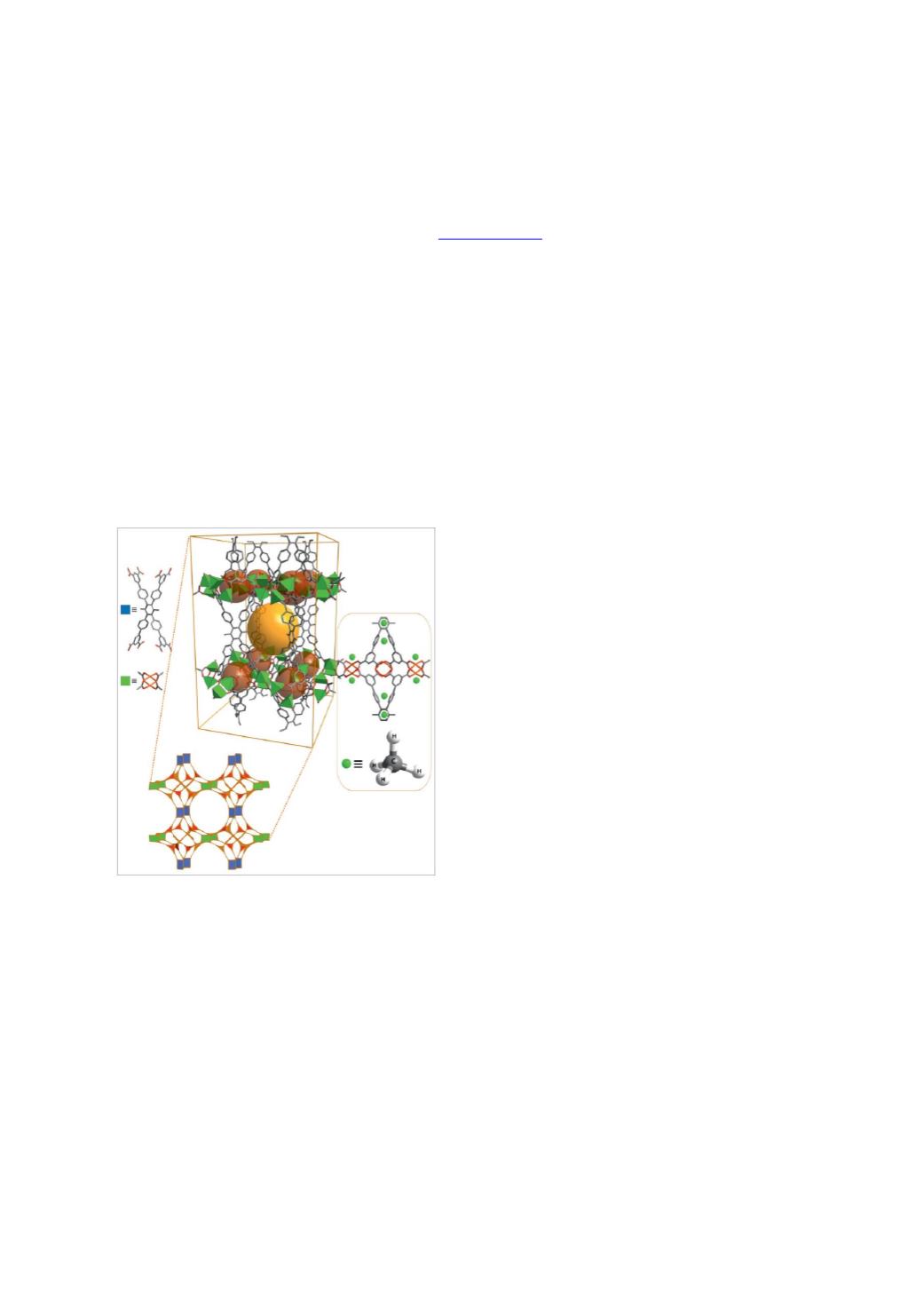
Reticular Chemistry and the Development of Novel Metal Organic Frameworks
Pantelis N. Trikalitis
Department of Chemistry
, University of Crete, Voutes, 71003 Heraklion, Greece
E-mail
During the last decade, reticular chemistry has been successfully applied for the
development of highly porous metal organic frameworks with desired topologies and
structural characteristics. The successful implementation of this approach relies on the
appropriate combination of metal clusters and organic linkers, taking into account both
linking topology and geometrical constrains. This is a molecular building block (MBB)
assembly process that can be used to design and synthesize MOFs with simple topologies
such as edge-transitive nets.
Following this approach, we recently
1
designed and successfully synthesized
expanded HKUST-1-like
tbo
-MOFs, using a judiciously designed rigid octatopic carboxylate
organic linker (see Fig. 1). The Cu analogue shows simultaneously enhanced gravimetric and
volumetric surface area with the highest reported CH
4
uptake among the tbo family,
comparable to the best performing MOFs for CH
4
storage.
From a design point of view, highly
symmetrical metal clusters with high
connectivity (i.e., > 6) are of particular interest
in targeting new MOFs, because they limit the
number of possible nets that are compatible
with their connectivity rules. Representative
examples are the highly connected hexanuclear
Zr-, Hf- and RE-based MBBs, which can be
readily formed under appropriate solvothermal
reaction conditions. Using judiciously designed
organic linkers, these MBBs can afford
different binodal, three dimensional (3D)
frameworks. This diversity originates from the
fact that these hexanuclear MBBs can be 12-,
10-, 8- or even 6-connected. In particular, the
8-connected MBB is compatible with several
binodal networks using different linkers,
including
csq
,
flu
,
the
, and
scu
networks.
Interestingly, the
scu
topology is very rare
among the 8-connected binodal nets despite the
fact that relatively simple, 4-connected organic
linkers with
D
4
h
or
D
2
h
symmetry are expected to readily form this net.
Careful topological analysis allowed us to reveal the key structural features that need
to be fulfilled by the organic linkers and in this way we succeeded in synthesizing a series
and high surface area
RE
-based MOFs with different topologies and structures, including
scu
. Structural details and gas sorption properties will be presented and discussed.
Reference
1. Spanopoulos, I.; Tsangarakis, C.; Klontzas, E.; Tylianakis, E.; Froudakis, G.; Adil, K.;
Belmabkhout, Y.; Eddaoudi, M.; Trikalitis, P. N.,
J. Am. Chem. Soc.
2016,
138
(5), 1568-1574
(Cover).
Fig. 1.
Assembly of expanded HKUST-1-like
tbo
-
MOFs using a designed octatopic linker and 4-
connected dimeric Cu
2
-units.
I 19
-121-


